How police foiled Islamic terror plot to bomb the MCG and nuclear reactor
MUSLIM terrorist Abdul Benbrika planned to bomb Australian targets such as the MCG, Crown Casino and the Lucas Heights nuclear reactor. New book Mugshots3 reveals how police stopped him.
Behind the Scenes
Don't miss out on the headlines from Behind the Scenes. Followed categories will be added to My News.
RADICAL self-proclaimed Muslim cleric Abdul Nacer Benbrika and several of his followers were convicted in Melbourne in 2008 of being members of an Australia-based terrorist cell.
I spent months interviewing people and examining thousands of pages of court transcripts and other documents relating to the case.

Doing so enabled me to piece together how the evil and dangerously manipulative Benbrika persuaded a group of mostly young and impressionable men to join him in what he claimed was an Allah-approved jihad war against unbelievers in Australia.
Mooted targets of Benbrika and his Victorian and New South Wales terror cells members included the MCG during the 2005 Grand Final, Sydney’s Lucas Heights nuclear reactor, and Crown Casino on Grand Prix weekend.
Benbrika’s goal was to commit a terrorist attack of such enormity it would persuade the Australian Government to pull its troops out of Iraq.
This Mugshots3 chapter traces how Benbrika’s terror cell developed, what it planned to do and how a joint Australian Federal Police and Victoria Police taskforce stopped it before it could commit what would have been the most devastating attack ever on Australian soil.
Mugshots 3
Investigators monitoring Benbrika’s homegrown terrorist group in Melbourne had visions of the devastation caused by Bali suicide bombers Jimi and Iqbal.
Armed only with a pipe bomb disguised in a vest, Iqbal walked into Bali’s busy Paddy’s Pub in 2002 and exploded the crude device.
His partner Jimi detonated a car bomb outside the nearby Sari Club seconds later.
The bomb was so powerful it registered as a five second earth tremor on seismic equipment which showed vibrations from the blast were felt over a 20km radius.
Iqbal and Jimi’s dual suicide bomb attack in the heart of Bali’s Westerner-dominated entertainment strip killed 202 people from 21 countries, including 88 Australians.
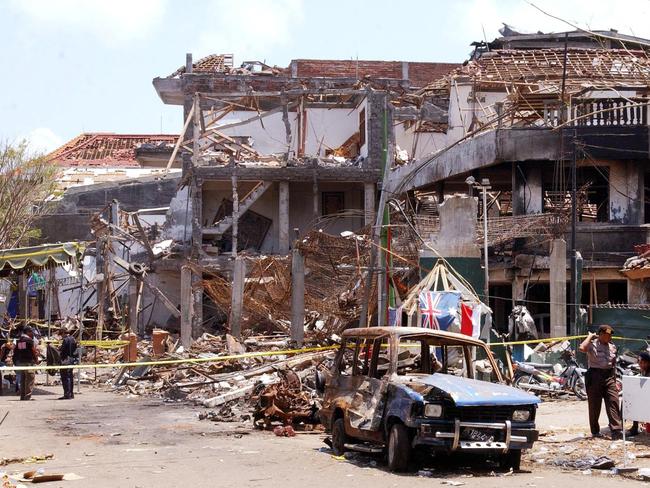
All the signs were there in 2004 and 2005 that the Victorian and New South Wales terror cells led by Melbourne-based Benbrika were planning something similar in Australia.
Police knew Benbrika had made inquiries about getting chemicals to make a massive bomb.
Undercover officers followed Benbrika as he travelled into secluded Victorian bush near Kilmore to watch a test explosion of a small bomb.
Police later secretly taped Benbrika discussing a 500kg version of the 500g test bomb he watched explode only days before the October 2004 federal election.
Benbrika was also taped bragging about what he hoped to achieve.
“We’ll damage buildings. Blast things … thinking big not small,” the firebrand cleric said.
“What we want to do is to do maximum damage and damage their property. Damage their lives.”
The quantity of chemicals which exploded in Bali with such deadly affect was between 150kg and 300kg — less powerful than the one Benbrika was talking about building.
Victoria Police explosives expert John Kelleher gave evidence during the trial of Benbrika cell members that he did not know of any building in Melbourne which wouldn’t be levelled by a bomb of the size Benbrika was discussing.
Police also knew Benbrika cell members Fadl Sayadi, Aimen Joud and Ahmed Raad had driven from Melbourne to a remote property near Louth in NSW for a terrorist training session.

A search by police after Benbrika’s men left the Curranyalpa paddock on the Yathonga cattle station, which is on the Louth-Tilpa road, found they had experimented with bomb detonation devices and fired off more than 20 shots from .308 and .22 calibre rifles into trees.
Police also knew Benbrika had persuaded at least one of his impressionable young followers to agree to become what would have been Australia’s first suicide bomber.
That would-be martyr was Abdullah Merhi and he was only 19 when he fell under Benbrika’s spell.
It helped that Benbrika was prepared to twist religious Muslim literature to extol the virtues of being a suicide bomber in a way that made it attractive to a vulnerable and naive teenager like Merhi, who was searching for something to believe in to fill a void in his life after the death of his father.
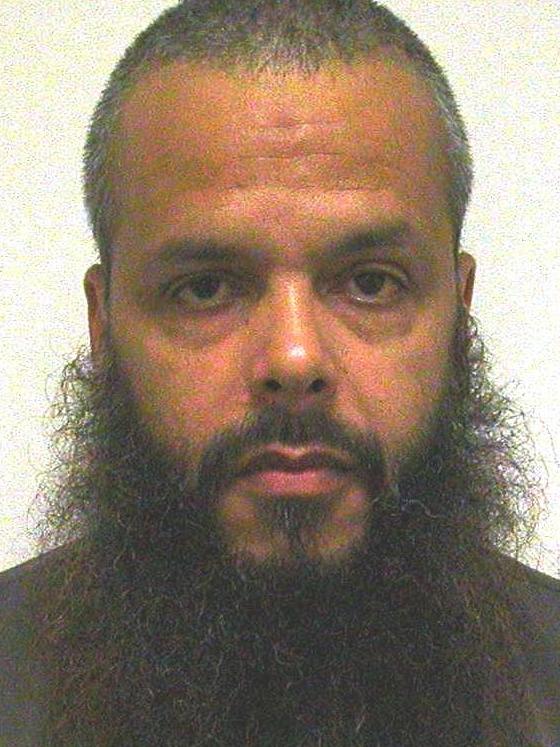
What Benbrika tempted Merhi with was what he claimed would be the juicy rewards awaiting him in Paradise after becoming a martyr in Allah’s cause.
Benbrika’s interpretation of Muslim religious documents was that if Merhi killed himself while committing a terrorist act in Victoria he would receive the seven special things Allah supposedly gives to martyrs and no one else.
They were that:
* HE would be able to marry 72 virgin women in Paradise.
* ALL his sins would be forgiven at the first drop of blood.
* HE would cross the sirat with the speed of light. (Muslims are taught the sirat is the bridge to Paradise that crosses over the Hell fire that every Muslim has to cross on Judgment Day and that some will make it and some will fall.)
* SEVENTY members of his family would be guaranteed access to Paradise.
* HE would be given a special crown and garment in Paradise so all would recognise him as a martyr.
* HIS soul would be kept in the bodies of the green birds which fly around in Paradise.
* HE would be saved from the punishment of the grave.
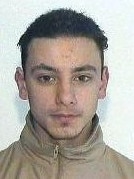
Police secretly taped Benbrika telling Merhi in September 2004 that the rulings of Allah meant it was permissible to carry out violent acts of jihad in Australia.
He said Allah permitted violent jihad against countries which were considered a land of war and that Australia was a land of war because it had sent troops to Iraq in support of the US.
Merhi was told it was his religious duty, his obligation as a Muslim, to do what he could to pursue violent jihad against any land of war and that Australia was just such a land.
Benbrika and Merhi spoke about the bombing of the Spanish commuter train system in Madrid earlier in 2004, which killed 191 people and wounded more than 2000.
They indicated it would be good to carry out a similar attack on Melbourne’s rail network.
BENBRIKA: “You shouldn’t just do, kill one or two or three, you need some good … like close to the station, the train.”
MERHI: “Like Spain. I’ve been thinking about this heaps, a lot, a lot, a lot, but the thing is, all this stuff is pleasing to Allah. It’s pleasing to Allah.”
BENBRIKA: “You are pleasing him. Why? Because they are killing our brothers.”
MERHI: “Have you ever seen the pictures of the American soldiers in Iraq doing to our women and stuff? I seen the pictures.”
BENBRIKA: “When you, in here, in Australia, when you do something they stop to send the troops. If you kill, we kill, here a thousand, the Government is going to think …”
MERHI: “Bring the troops back. Because if you get large numbers here the Government will listen.”

Police also taped Benbrika telling his followers not to believe moderate Muslims when they taught that the word jihad had many meanings, not all of them violent.
“They say jihad means many things. He’s a donkey. he doesn’t understand his religion,” Benbrika said.
Armed with all this intelligence, it’s no wonder joint counter terrorism team members — who monitored more than 16,000 hours of bugged conversations between Benbrika and his group between July 2004 and November 2005 — suspected an imminent terrorist attack in Melbourne.
The joint counter terrorism team formed a taskforce, codenamed Operation Pendennis, to investigate Benbrika and his cell.
Pendennis was made up of Australian Federal Police, Victoria Police and ASIO agents.
Their constant fear was that Benbrika and his cell would commit a terrorist act before there was enough evidence to lay charges.
“We knew they were heading towards committing a terrorist act,” a senior Pendennis officer told me.
“The bugged conversations reaffirmed that. They certainly talked the talk.
“Constantly in the backs of our minds was the dreadful thought ‘what if they do something and we miss it’. That was the sort of pressure we were under to get the timing right.”
Members were well aware that if they went in too early they risked not having enough evidence to successfully prosecute.
They were equally aware that if they misjudged the timing of the arrests it might allow Benbrika’s cell to commit an atrocity of enormous proportions — with the potential to change the Australian way of life.

One of the scenarios which ran through the minds of Pendennis investigators was Benbrika utilising one of his willing youths to walk into a popular Melbourne meeting place, such as a crowded AFL game, wearing a suicide bomb vest.
Exploding the device in such circumstances would be physically damaging for those in the vicinity and mentally damaging to most Australians.
Fifty or more people could easily be killed. But the death of even one AFL fan as a result of a suicide bomb attack would send long-lasting shockwaves through the community.
That scenario was discussed even before prosecution witness Izzydeen Atik told police of a discussion he had with Benbrika about a planned attack on the MCG.
ASIO and police raids on Benbrika cell members forced the plotters to shelve plans to bomb the 2005 AFL Grand Final between Sydney Swans and West Coast Eagles.
Atik said Benbrika then switched targets to a choice between a 2006 NAB cup game or Crown casino during the Grand Prix weekend.
Thanks to Victoria Police achieving what very few agencies in the world have succeeded in doing — which was get an undercover operative to infiltrate a terrorist group — the Pendennis investigators witnessed Benbrika exploding a test bomb in a remote forest, 60km north of Melbourne, three days before the October 9, 2004, federal election.
It was Victoria Police which first received the tip in early 2004 that Benbrika appeared to be recruiting would-be terrorists through his Muslim teaching classes.
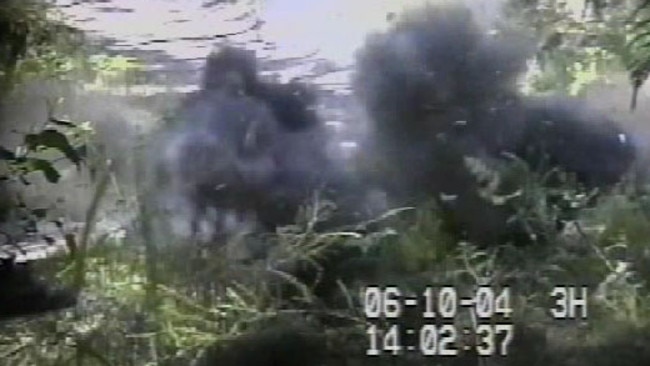
By May 2004 it had managed to introduce one its undercover agents, codenamed SIO39, to some of Benbrika’s followers.
He posed as a Muslim of Turkish background who had lived in Tasmania for most of his life and was newly arrived in Melbourne.
SIO39 attended several of Benbrika’s classes and played his role convincingly enough to eventually be granted long private meetings with Benbrika.
Benbrika trusted SIO39 sufficiently to accompany him on a bomb-testing trip on October 6, 2004, to Drag Hill Rd, Kilmore, in a remote part of the Mt Disappointment state forest.
The pair blew up a smaller version of a huge chemical-based bomb Benbrika was secretly taped discussing with SIO39.
Covert Pendennis video cameras caught the normally sedate Benbrika running through the bush to inspect the bomb site immediately after the explosion.
They also recorded the delight on Benbrika’s face when he witnessed first-hand the damage even such a small 500g bomb could do.

Taped discussions between SIO39 and Benbrika reveal Benbrika was keen to learn all SIO39 knew about explosives — and how much of them you needed to destroy particular things.
A September 27, 2004, taped discussion between Benbrika and some of his terror cell members about the election, and Benbrika’s October 6, 2004, test bombing, put the Pendennis team on edge about the October 9, 2004, federal election being a possible target.
Another taped conversation on the eve of the election prompted heightened security for John Howard, the then Prime Minister, and other politicians as it suggested an attack was possibly being planned for polling day.
The then AFP Commissioner, Mick Keelty, said while there was no firm evidence Mr Howard was ever a target of the Benbrika group, when somebody like a Prime Minister was named by such a group it placed added burdens on police and resources.
“Had an attack occurred on the Prime Minister, whose security we are responsible for, and people were reading these listening device transcripts in hindsight, they would be saying to us, ‘well it was there in black and white, why didn’t you do something about it?’,” he told me in 2008.
If one of Benbrika’s followers slipped under the surveillance radar — and it is incredibly hard to keep 12 people under surveillance 24 hours a day — and committed a terrorist act then the subsequent inquiry into the incident would discover police were aware of the content of the incriminating bugged conversations months prior to the attack and heads, senior heads, would inevitably have rolled.
That’s aside from the personal toll on Pendennis team members, who would have had to have lived with the terrible consequences of not having moved in earlier.
It’s for those reasons that police err on the side of caution in deciding when to arrest suspected terrorists, preferring to go sooner rather than later to ensure they stop the anticipated attack — even if doing so lessens the prospect of successful prosecutions.
“It’s very difficult to pinpoint how close Benbrika’s cell was to taking action, but clearly, on the evidence that was put forward to the court, we thought they were planning something imminent,” Mr Keelty said.

“That is why, in the Benbrika case, with the Commonwealth Director of Public Prosecutions, we briefed the Federal Government and explained what was happening — but explained the deficiency in the legislation.
“The problem with the legislation was that the legislation at the time talked about ‘the’ terrorist act.
“And in the Benbrika matter there was no definite decision about ‘the’ terrorist act but, in our view, clearly they were planning for ‘a’ terrorist act.
“So we explained that to the previous government and that was when they recalled the Senate and changed the wording of the act to ‘a’ terrorist act.”
Mr Howard told Parliament about the changes being rushed through on November 3, 2005.
“The amendments will clarify that it is not necessary for the prosecution to identify a specific terrorist act,” he said.
“When determining whether an organisation satisfies the definition of a terrorist organisation, it is not necessary to prove the organisation is preparing, planning, assisting in or fostering ‘the’ particular terrorist act.
“It will be sufficient if the prosecution can show the organisation is preparing, planning, assisting in or fostering ‘a’ terrorist act.’’
Pendennis officers in Victoria arrested Benbrika and other members of his cell on November 8, 2005, five days after Mr Howard’s speech.
Some of those arrested applied for bail in Melbourne Magistrates’ court that day — and there was drama both inside and outside the court.
Supporters of those charged sat in court and later abused Pendennis taskforce members in the lobby. One Pendennis agent, quite justifiably, grabbed the ringleader, twisted his arm up his back and frogmarched him out of court.
The supporters then took their anger out on the waiting media in William St. They attacked television cameramen and newspaper photographers.
Inside the court, Victoria Police Pendennis member Det-Sen-Sgt Chris Murray was telling Abdullah Merhi’s bail hearing that 20-year-old Merhi was a fervent devotee of the most radical form of Islam and wanted to become Australia’s first suicide bomber.
Merhi had gone to Benbrika seeking permission to become a martyr in Australia.
“He wanted to die here. He said he wanted to be a martyr,” Sen-Sgt Murray said.
“It was quite clear he wanted to go the way of … similar to a suicide bomber. I’ll put it in my terms, he wanted to kill himself.”
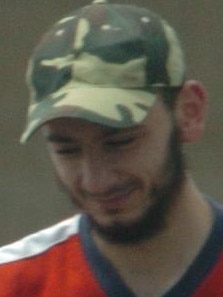
Police who raided Merhi’s home also discovered he had made his will on May 8, 2005.
Evidence suggests he prepared the document on the assumption he would soon die as a martyr.
His will included a message to attack the Australian government if it didn’t carry out the wishes contained in it, which included distributing his money equally between his wife, his other family and a Muslim charity.
“If government interferes with this I call my true Muslim brothers all over to fight jihad for the sake of Allah over any interference with this will,” Merhi’s will said.
Pendennis officers also seized notes Merhi had made of what Benbrika was teaching during his lessons.
One of Merhi’s notes said: “It’s not enough to hate them in the heart. You need to show with actions.”
Another three members of Benbrika’s cell were arrested in Melbourne on March 31, 2006.
Most of those arrested chose to give “no comment” interviews when questioned by Pendennis investigators, but a taped interview police did with Amer Haddara immediately after his arrest proved illuminating.
He co-operated and admitted knowing Benbrika and attending Benbrika’s classes and he identified several others he knew through Benbrika.
More importantly, he admitted he wished he could commit violent jihad and become a martyr and the circumstances existed for jihad to be religiously approved in Australia because Australia had joined with the US to oppress Muslims.
POLICE: “Can you tell us what the term jihad means?”
HADDARA: “Jihad, if you look in the Koran it means military struggle.”
POLICE: “A military struggle between who?”
HADDARA: “Between Muslims and oppressors.”
POLICE: “Can you give me an example of who an oppressor could actually be?”
HADDARA: “The US, Australia, any country that is attacking any other country to take over for land.”
POLICE: “Do you understand that by living in Australia you’re under legislated law. We’re not under Islamic rule here.”
HADDARA: “And I’m telling you that what you’re doing is considered oppression.”
POLICE: “So you’re saying the best way for this country would be go the way of Islam?”
HADDARA: “By all means.”
POLICE: “Do you respect the legislated law?”
HADDARA: “I don’t. No I don’t respect that.”
POLICE: “So you prefer sharia (Islamic) law?”
HADDARA: “No doubt.”
POLICE: “Do you wish to undertake jihad?”
HADDARA: “As a Muslim, every Muslim tries his best to please his Lord. Once he has some certainty in that … certainty that he may be entering Paradise. So if jihad is something, a solution that will lead me down that path, why not.”
POLICE: “Would you go overseas to undertake jihad?”
HADDARA: “If I see a path I will.”
POLICE: “If somebody asked you to undertake jihad here, would you?”
HADDARA: “If there is certain evidence that proves that it is allowed then I will.”
POLICE: “And when is it allowed?”
HADDARA: “It’s allowed once oppression is applied.”
POLICE: “Do you think oppression is happening in this country at the moment?”
HADDARA: “It is.”
POLICE: “You’ve said that you’d be willing to undertake militant jihad.”
HADDARA: “No doubt.”
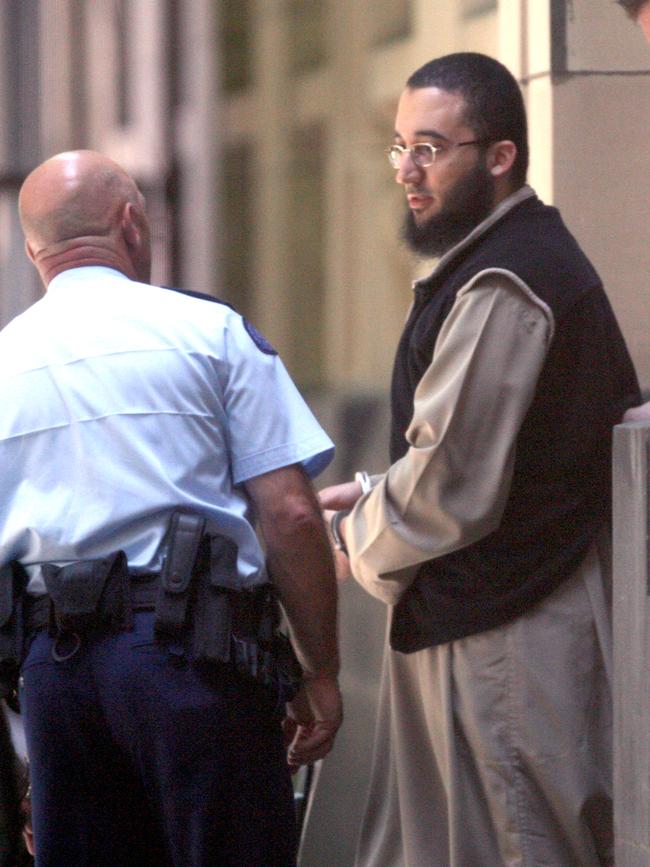
POLICE: “What you’re saying, and, again, correct me if I am wrong, you’d happily ... if there was a jihad against the Australian government you would take part in that because it, what you were saying before, the Australian government is oppressing against …”
HADDARA: “Yes.”
POLICE: “Islam. What’s a martyr?”
HADDARA: “A martyr is basically anyone that dies in battle.”
POLICE: “And what happens after they die?”
HADDARA: “Obviously they go, as, as Allah, to whom be ascribed all perfection and majesty, promised in the Koran, he promised them Paradise.”
POLICE: “Would you be happy to martyr yourself?”
HADDARA: “I wish … I’d love to go to Paradise.”
POLICE: “Now what I would call a suicide bomber, a person who straps on a bomb vest and runs into, well, we’ll use Iraq, for example. That’s my idea of a martyrdom operation, would be someone who drives a truck laden with explosives or a bloke with, with a bomb vest on who goes and tries to kill as many Americans as what he possibly could. Is that a fair saying to what a martyrdom operation is?”
HADDARA: “Most definitely.”
POLICE: “Well, would you go to that extent?”
HADDARA: “If I had to and there was such extremes, yes.”
Haddara was released from jail in May 2010 after serving just four-and-a-half years for being a member of Benbrika’s terrorist organisation.
Pendennis members could not have guessed when the taskforce was formed in July 2004 that they would be involved in 16 months of intense activity before the first arrests were made.
During that period they secretly tapped 174 phone services and monitored 97,480 calls between Benbrika and cell members.
They also had to listen to 16,418 hours of conversations gathered from 15 listening devices planted in the homes of various cell members.
Undercover agents spent 2760 hours keeping Benbrika and his followers under surveillance.
More than 26 gigabytes of transmitted internet traffic was intercepted and police also seized scores of lengthy documents which advocated violent jihad.
Some of those documents contained precise instructions on how to make bombs and commit terrorist acts.
The investigation cost the AFP alone more than $12.2 million — Victoria Police put its Pendennis costs at $3.2 million while ASIO’s cost remained confidential due to it being one of the most secretive agencies in the nation.
Then there is the cost of what has been Australia’s biggest terrorism trial, before Supreme Court Justice Bernard Bongiorno, which sat for 115 days over almost seven months.
Each of the 12 defendants had a different legal team, funded courtesy of the taxpayer through Legal Aid at an estimated cost of at least $4 million.
Eight of them — Benbrika, Aimen Joud, Abdullah Merhi, Ahmed Raad, Amer Haddara, Fadl Sayadi, Ezzit Raad and Shane Kent — were convicted — while Hany Taha, Shoue Hammoud and brothers Bassam and Majed Raad were acquitted.
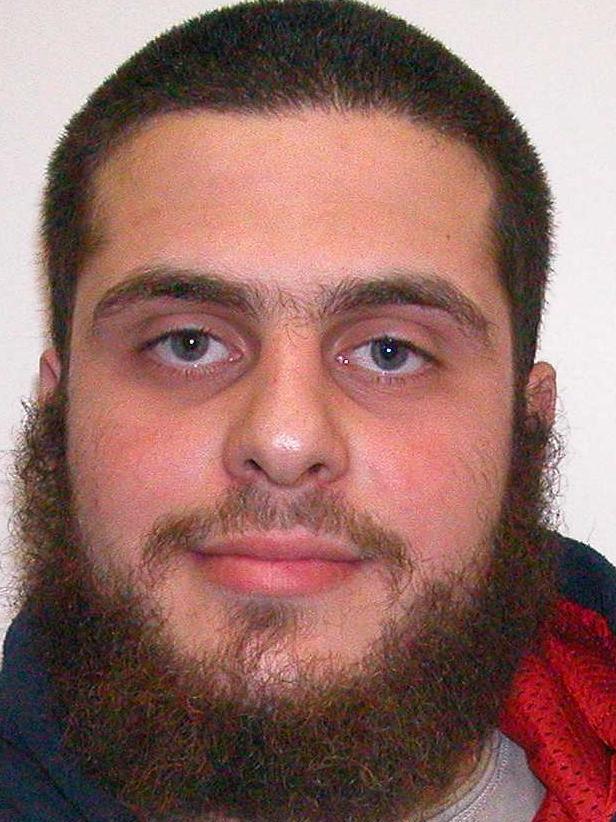

It was revealed by me in the Herald Sun in 2011 that Benbrika had escaped being tried over other charges laid over his plot to bomb Australia.
Benbrika and his Melbourne cell members were jailed in 2008 after being found guilty of being members of a terrorist organisation.
Benbrika and three of his Melbourne terror cell members Aimen Joud, Fadl Sayadi and Ahmed Raad were due to face trial in Victoria in 2011 on the more serious terrorism charge of conspiring to commit a terrorist act in Australia, which carries a maximum jail term of life.
Five Benbrika cell members in NSW were jailed for between 23 and 28 years on the same charge, over the same conspiracy and on similar evidence to that against the Melbourne terror cell members.
But I revealed in the Herald Sun in 2011 that Victorian Supreme Court judge Terry Forrest had granted a defence application to permanently stay the conspiracy case against Benbrika, Joud, Sayadi and Raad.
Other terrorism charges against Benbrika and Joud were also dropped by the prosecution as a result of the abandoning of the main charges against Benbrika, Joud, Sayadi and Raad.
Prosecutor Richard Maidment, SC, told the Victorian Supreme Court during the 2008 trial on the less serious terrorism charges that Benbrika was “at the hub of the organisation and he was its director and its leader”.
“The kind of terrorist act contemplated by the organisation included a bombing attack where maximum damage and loss of life could be inflicted, such as at a football ground or a railway station,” he said.
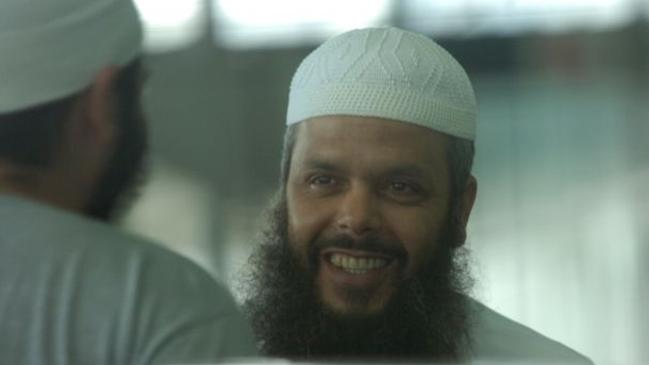
Mr Maidment also said a 2004 group trip to Sydney by Benbrika and other members of his Melbourne cell was aimed at “ extending the activities of the organisation to those persons in Sydney”.
Police planted a large number of listening devices in the homes of various cell members to secretly recorded more than 16,418 hours of Benbrika and the Melbourne and Sydney cell members talking. They also tapped hundreds of phones and monitored 97,480 calls between Benbrika and Melbourne and Sydney cell members.
“Listening devices had detected a constant theme, over many months, directed at violent jihad, which has no respect for human life, and embracing the notion that it’s permitted in certain circumstances to kill innocent women and children,” Mr Maidment said.
During the investigation into Benbrika and his Melbourne and NSW terror cells, police secretly created and exploded a “Mother of Satan” bomb to prove Abdul Benbrika and his extremist followers had the materials to make the infamous terrorist device.
They were able to show that Benbrika’s terrorist followers ordered or bought hundreds of litres of chemicals and specialist laboratory equipment to make a “Mother of Satan” bomb capable of killing and injuring hundreds of people.
The “Mother of Satan” bomb was the weapon of choice for terrorists around the world.
It was used in the 2005 London tube and bus bombings, which killed 52 people and injured more than 700, as well as many more terror attacks.

Officers who worked on Operation Pendennis, the joint Victoria Police and AFP taskforce that foiled the planned terrorist attack, were bitterly disappointed Benbrika escaped being tried over his plot to bomb Australia. They considered Benbrika was both the spiritual and actual leader of the Melbourne and Sydney terror cells.
The 2011 decision to grant a defence application to permanently stay conspiracy to commit a terrorist act charges against Benbrika and Melbourne terror cell members Aimen Joud, Fadl Sayadi and Ahmed Raad was made despite:
* FIVE Muslim terror cell members being jailed in NSW in 2010 for between 23 and 28 years on similar evidence as that against Benbrika, who was their spiritual leader and adviser on waging violent jihad against Westerners.
* CONVICTED NSW terror cell members Mohamed Ali Elomar, Abdul Rakib Hasan and Khaled Sharrouf being named as co-conspirators on the Victorian indictment against Benbrika, Joud, Sayadi and Raad.
* BENBRIKA providing NSW terror cell members with extremist material which glorified terrorist attacks in the name of Allah.
* EVIDENCE that Benbrika and other Melbourne terror cell members helped the Sydney cell in its attempts to buy large quantities of bomb-making equipment in Melbourne.
* JOUD, Sayadi and Raad attending a secretive training camp in isolated bushland in NSW where they and four NSW cell members undertook shooting exercises and experimented with batteries and spark plugs which could have been used as bomb detonation devices.
* NSW terror cell member Hasan urgently visiting Benbrika in Melbourne the day after Hasan and two other cell members were stopped and searched by police within the exclusion zone around Sydney’s Lucas Heights nuclear reactor at 10.30pm. Police discovered the lock for a gate to a reservoir near to the reactor had recently been broken.
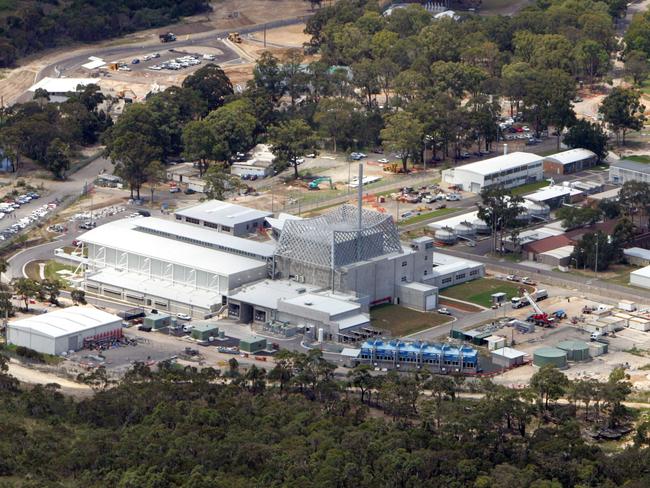
* BENBRIKA being in regular contact with NSW terror cell member Moustafa Cheikho, who underwent jihadi training at a camp run by terrorist group Lashkar-e-Taiba in Pakistan in 2001.
* EVIDENCE that a group trip to Sydney by Benbrika and other members of his Melbourne cell in 2004 was aimed at extending the activities of the terrorist group to the Sydney men who were eventually charged and convicted of conspiring to commit a terrorist act.
The decision to permanently stay the charges in Victoria was also made despite evidence in the trial of the NSW cell members that a terrorist attack of potentially mammoth proportions was imminent at the time Benbrika and the Melbourne and Sydney cell members were arrested in co-co-ordinated Pendennis taskforce swoops on the same day in Victoria and NSW in 2005.
“The materials were to hand and recipes for the construction of explosives were available,” Supreme Court judge Anthony Whealy said in 2010 in sentencing the five NSW cell members.
Police involved in the Pendennis taskforce, which spent 16 months investigating the terror cells associated with Benbrika in Victoria and NSW, were disappointed Benbrika, Joud, Sayadi and Raad escaped being tried on the conspiracy to commit a terrorist act charges — despite the five NSW cell members being jailed for between 23 and 28 years on the same charge and on similar evidence as that against Benbrika and his Melbourne cell members.
They believed they had a strong case against Benbrika, Joud, Sayadi and Raad.
The officers privately argued that as a jury in NSW has already found the five NSW cell members guilty on similar evidence to that which would have been used against the Melbourne cell members there was a good chance a Victorian jury would also have brought in guilty verdicts.
They considered Benbrika was both the spiritual and actual leader of the Melbourne and Sydney terror cells.
Justice Whealy, who conducted the 11-month trial of the NSW terror cell members, said the group wanted to intimidate the Australian Government into abandoning its involvement with the Western Alliance in the war against Muslims in Middle East nations.
“The terrorist act or acts contemplated involved the detonation of one or more explosive devices, or the use of firearms, or both. It was plainly intended that this act, or those actions, would be of a major kind,” Justice Whealy said.
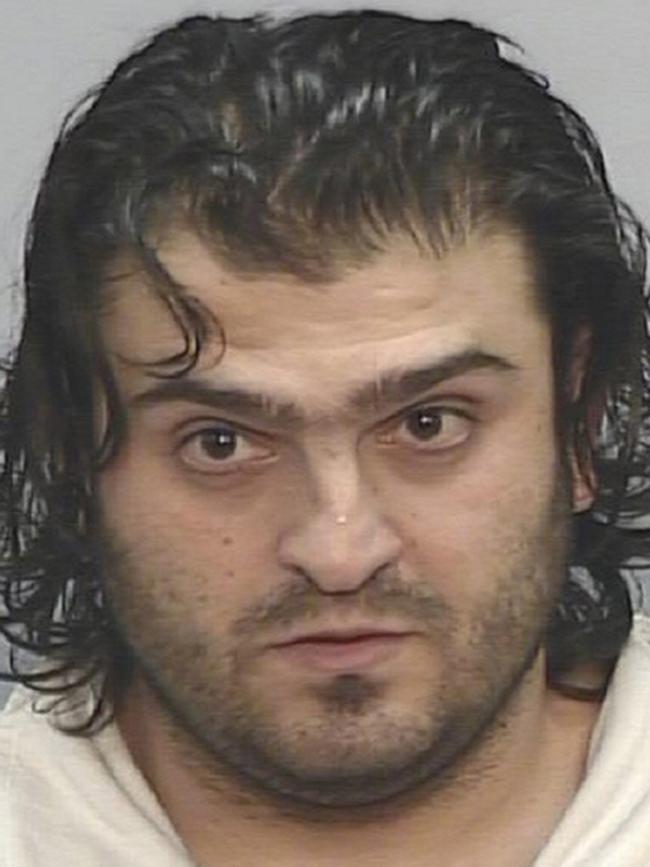
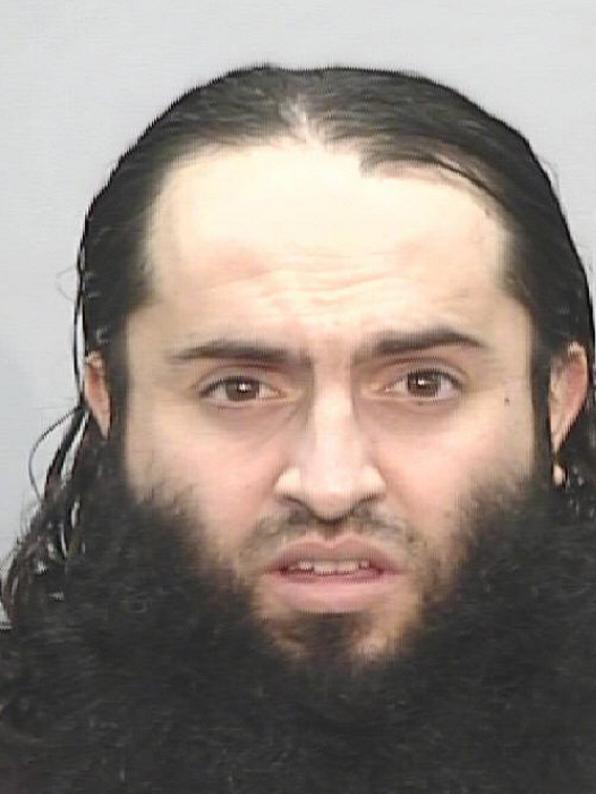
NSW cell members Elomar, Hasan, Khaled Cheikho, his nephew Moustafa Cheikho, and Mohammed Omar Jamal, 27, were sentenced in 2010 to between 23 and 28 years after being convicted of conspiring to commit a terrorist act.
A police statement of facts tendered in a Sydney court claimed Elomar bought five antitank rockets launchers in 2003 and that he told others “I am going to blow up the nuclear place”.
The prosecutor in the NSW terror trial, Richard Maidment, SC, said the men sought to obtain large quantities of firearms, ammunition and chemicals which would have enabled them to build devices “capable of causing substantial damage and loss of life”.
He said written instructions on how to build explosives from the chemicals and laboratory equipment they bought or ordered were found in their possession and that each of them believed carrying out jihad as part of a Holy War was justified in the teachings of the Islamic faith.
“There are a number of utterances which suggest that the purpose of the organisation was to do something big, cause maximum damage, kill a thousand at the train station, football, whatever.” Mr Maidment said.
The abandoned conspiracy to commit a terrorist act charges against Benbrika, Joud, Sayadi and Raad in Victoria didn’t require the prosecution to prove they had a specific target in mind.
Nor did the prosecution have to prove they actually bought the chemicals and laboratory equipment needed to make a bomb in Victoria.
Under Australia’s tough terrorist legislation it would have been sufficient to prove they were preparing for a terrorist attack by ordering the materials — and police believed there was strong evidence they did that.
That evidence included that Joud and Sydney terror cell members Hasan and Sharrouf, who pleaded guilty to possessing ammunition, clock timers and batteries to be used in making bombs, visited Benbrika at his Melbourne home on February 23, 2005.

Police had secretly bugged Benbrika’s house and phones by this stage and were able to listen to every word spoken. Benbrika was taped extolling the virtues of dying for jihad and damaging “their buildings with everything and damage their lives”.
There was discussion between them about buying laboratory equipment from Haines Educational in the Melbourne suburb of Oakleigh.
Hasan’s wife contacted Haines on August 11, 2004 and asked for a catalogue. The catalogue included laboratory equipment.
During the course of the discussion between Benbrika, Joud and the NSW terror cell members, reference was made to specific items in the Haines catalogue. The taped discussion correlated with a handwritten list of an order which was placed with Haines on June 2, 2005.
That order for 55 laboratory items was sent to Haines from a public fax machine at a chemist shop in Sayers Rd, in the Melbourne suburb of Hoppers Crossing, close to Joud’s home, and was placed in a false name.
A handwritten list of the items, with the Haines code numbers and the quantities required, was found at Joud’s home during a raid by police on June 22, 2005.
Hasan and Joud’s fingerprints were found on the document seized by police at Joud’s home and the handwriting on it was identified as belonging to NSW terror cell member Elomar.
Hasan and Elomar were taped on May 4, 2005, discussing the preparation of an order from the Haines company in Melbourne and later that day the order was discussed again between Hasan, Elomar, Joud and Benbrika and the order was eventually placed on June 2, 2005.
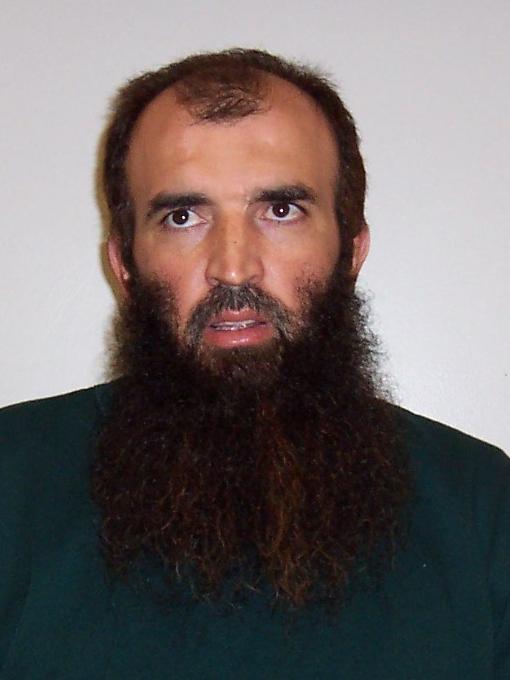
A follow-up telephone call in relation to the laboratory equipment order was received by Haines on June 14, 2005.
The mobile phone used to make that call to Haines was activated that day in a false name. The receipt for the telephone was found at Hasan’s home on June 27, 2005.
The address given when activating the mobile phone was the same street and suburb as Joud’s home.
Items ordered from Haines matched laboratory equipment which extremist literature identified as being required to make a chemical bomb. Such literature was found in the homes of Melbourne and Sydney terror cell members when police raided them.
The prosecution in the NSW case against the five Sydney terror cell members detailed Benbrika and Joud’s role in helping to order the laboratory equipment from Haines as evidence of a conspiracy to commit a terrorist act.
It also provided the court with an extensive chronology of the many contacts, both face-to-face and over the phone, between the NSW and Melbourne terror cell members as further evidence of a joint conspiracy to commit a terrorist act.
That evidence helped convince a NSW jury to convict all five NSW terror cell members and the judge last year jailed them in 2010 for between 23 and 28 years.
Justice Forrest’s decision in 2011 not to proceed with the conspiracy to commit a terrorist act charges against Benbrika, Joud, Sayadi and Raad meant that a Victorian jury never got the chance to hear the same damning evidence a NSW jury did.
It also meant Benbrika, Joud, Sayadi and Raad will not face any extra jail time on top of what they were sentenced to on the lesser terrorism charges they were convicted of in 2008.

Benbrika was jailed for a maximum of 15 years and ordered to serve a minimum of 12 on those lesser charges, which means he became eligible for parole in November 2017 and is due to be released in November 2020. Joud and Raad were given minimum terms of six years and were released in November 2011.
Sayadi only served his minimum term of five years and three months and was also released in 2011.
In jailing the five NSW terror cell members in 2010, Justice Whealy said it was “clear beyond doubt” that Joud placed the order for the laboratory equipment with Haines in Melbourne and that “it was done with the help and approval of Hasan and Elomar”.
“I am satisfied beyond reasonable doubt that the Melbourne attempts to obtain an extensive range of laboratory equipment were attempts to obtain equipment for the making of explosive devices,” he said.
Justice Whealy also found beyond reasonable doubt that the discussion about the Haines laboratory list between the Sydney and Melbourne terror cell members in Benbrika’s house on February 23, 2005, was in connection with the future acquisition of laboratory equipment for the purposes of making explosives”.
There were unconfirmed reports at the time of writing in August 2017 that Benbrika terror cell member Khaled Sharrouf had been killed by a US air strike while fighting for Islamic State in Syria.
Sharrouf became one of Australia’s most infamous jihadists after serving less than four years in jail for being one of Benbrika’s terror cell members and then leaving Australia to join Islamic State.
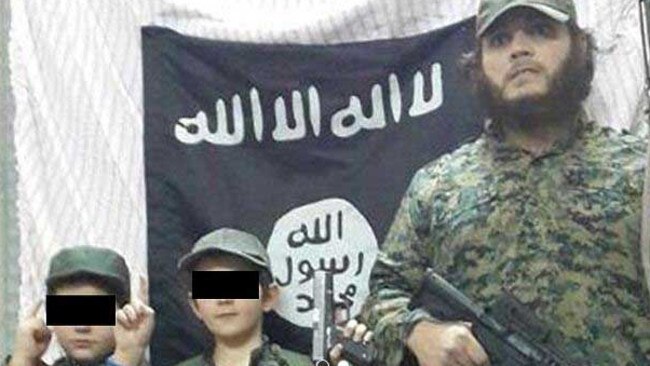
His notoriety increased dramatically when photographs surfaced of one of his sons holding the severed head of a slaughtered Syrian official.
Also at the time of writing in August 2017, Benbrika was continuing to influence would-be terrorists from inside his jail cell.
Mugshots3 is published by Wilkinson Publishing, RRP $29.99
Originally published as How police foiled Islamic terror plot to bomb the MCG and nuclear reactor


